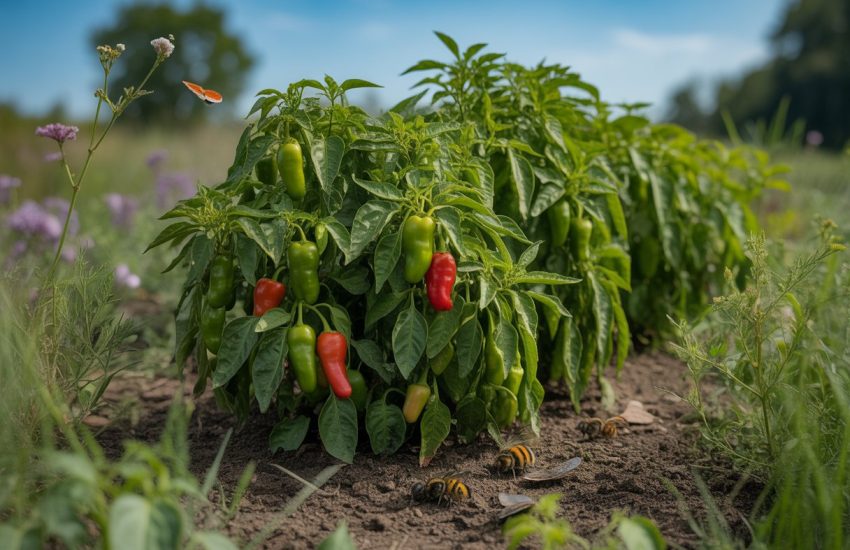South Carolina Native Plants for Landscaping [with Pictures]
South Carolina has rich biodiversity; many of these plants can be found in our forests, fields, swamps. Native plants are beneficial to our environment and our economy. They are often more resilient to pests and disease and provide wildlife food and shelter. In South Carolina, over 1,000 plant species are native to the state.
There are many benefits to having native plants in our landscape. They help us protect our environment by filtering water and removing pollutants from the air. They also play an essential role in regulating the climate. For example, certain plants can help dissipate heat or cool down during hot weather episodes.
One of the biggest reasons we should continue to support native plant growth is that they are affordable. By planting these plants, we can save money on our gardening expenses while also helping preserve our environment.
Native South Carolina Perennials
Crested Iris
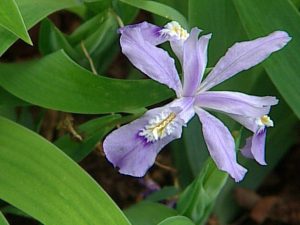
The Crested Iris (Iris cristata) is a perennial flower with erect stems that can grow up to one meter tall. The flowers are arranged in a spike, with five light blue or purple petals. Bees pollinate the flowers, and the plant can often be seen growing wild in South Carolina.
Foam Flower
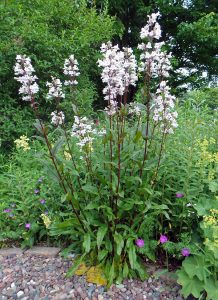
The foam flower is a perennial that thrives in the moist soil of the Carolinas. It is a beautiful plant with numerous blooms that are white or light pink and have a floppy shape. The foam flower can grow up to 6 inches tall and has long petals that droop down. The flowers are pollinated by bees, which can be used as an ornamental plant or as part of a flower garden.
Aster
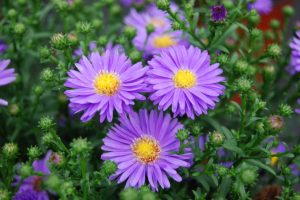
This hardy little flower can bloom throughout the state, from the coastal marshes to the rolling hills of the Upstate. Aster is a conspicuous addition to any garden and can be grown in various soils and climates. Here are some tips on increasing aster in your garden:
Aster is a versatile plant that can be grown in many climates and soils. It prefers natural sun but will tolerate partial shade as well. It is easy to grow and needs little maintenance. Aster will self-sow, so it is best to plant a few seeds near each other to create a better colony.
Aster is a flowering plant that can be found throughout the United States. Aster plants are a favorite of many gardeners because they produce large, showy blooms.
Wild Indigo
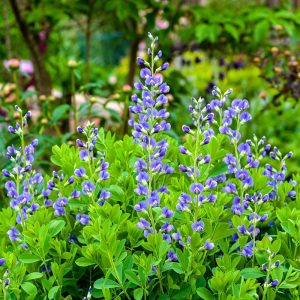
The genus Tradescantia includes a variety of perennial plants that grow naturally in the south. Plants in this genus are known as wild indigo and include species like T. lutea and T. occidentalis. The flowers are typically blue or purple and can be used to dye fabrics or make herbal teas.
Wild Columbine
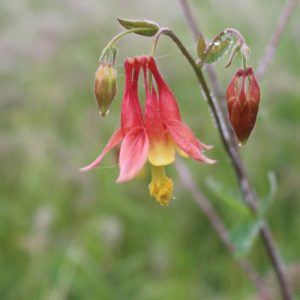
One of the most abundant wildflowers in South Carolina is the columbine. Columbine can be found in fields, meadows, woodlands, and at the edge of wetlands. Columbine can be found throughout South Carolina but is especially common in the Upstate region.
Native Shrubs in South Carolina
When deciding when to plant a shrub in the garden, it is essential to consider your specific climate and soil type. Some shrubs do better in warm temperatures, while others do better in cooler climates. Shrubs that do well in warm climates need ample sunlight and should be planted near a sunny window. On the other hand, shrubs that do well in cooler temperatures can be produced in areas with less sunlight.
Another factor to consider when planting a shrub is the soil type. Shrubs that prefer acidic soils should be planted near a border of acidic soil. In contrast, shrubs that prefer alkaline soils should be planted near an edge of alkaline soil.
If you are planting shrubs in the garden in South Carolina, you will first need to decide what kind of soil to use. Three main types of dirt can be used for shrubs: sandy soil, clay soil, and loam soil.
Sandy soil is good for plants that need a lot of water and are prone to becoming boggy. Clay soil is excellent for plants that don’t need a lot of water and prefer a drier environment. Loam soil is perfect for plants that need water, moisture, and a good amount of nutrients.
Next, you will need to weed your shrubs. Weeding is essential for keeping your shrubs healthy and helping them grow properly. You should also water your shrubs regularly, especially in the beginning stages of their growth. Once your shrubs are established, you may only need to water them once a month or less.
Wild Rhododendron
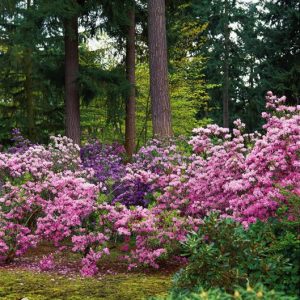
Wild rhododendron is one of the best shrubs for the garden in South Carolina. This plant grows well in both wooded and open areas, making it a good choice for gardeners in both suburban and rural areas.
Wild rhododendron is a deciduous shrub that typically grows to about 4 feet tall and 2 feet wide. It has oval leaves that are green on the top and white on the bottom. The flowers that bloom from May to July are purple and white.
Some benefits of planting wild rhododendron in your garden include its ability to grow in various climates, its resistance to disease, and its ability to adapt to multiple soil types. Wild rhododendron is also hardy in zone 4, making it an excellent choice for gardeners in the southeastern United States.
Inkberry Holly
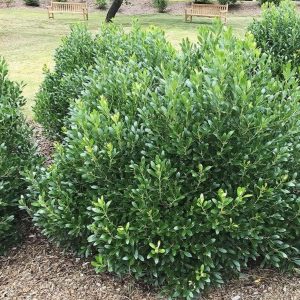
Inkberry holly (Ilex glabra) is a shrub native to the southeastern United States. It is a hardy plant that can survive in various soils and climates. This shrub grows up to 4 feet tall and has dark green leaves that are ovate.
Inkberry holly is an attractive shrub used in the landscape or as a specimen tree. It can be used in gardens as an understory tree or border plant. It is tolerant of dry and wet conditions, making it a good choice for areas prone to flooding.
Inkberry holly is not commonly found at nurseries but can be obtained through online retailers or local garden centers. It is a tough plant that will require little maintenance once it is established in the garden.
Florida Anise
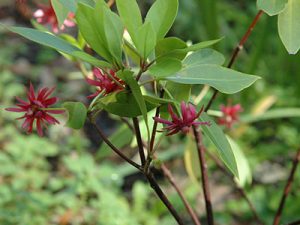
One shrub that is especially popular in the South Carolina area is the Florida anise. This shrub is easy to grow and adapts well to various soil conditions. It has large, oval leaves that are dark green on the top and light green on the bottom. The flowers are purple or blue and are produced in clusters at the end of branches.
Florida anises are best used as a border or accent shrub in a garden. They can be planted near other plants that prefer shady areas, such as roses or azaleas. They will provide interest and color to any landscape and are relatively low-maintenance.
Bottlebrush Buckeye
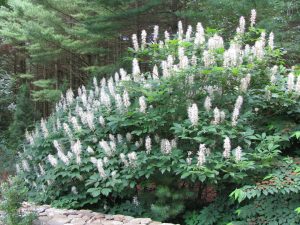
This shrub is a fast-growing species that can be grown in full sun or partial shade. It is also drought tolerant, so that it will do well in areas with limited water availability.
The bottlebrush buckeye is best known for its brightly-colored flowers. These flowers are usually pink, purple, or yellow and can be enormous. The flowers are also fragrant, making them a favorite of bees and pollinators.
Piedmont Azaleas
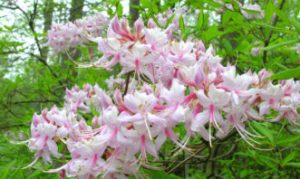
Piedmont azaleas are shrub that is popular in the area. They are easy to care for and provide beautiful flowers year-round.
Some other benefits of having shrubs in the garden are that they can add shade during the hot summer months, add beauty to an otherwise flat area, and help reduce noise levels in a park. Shrubs also provide valuable nutrients to the soil, so they are suitable for fertilizing gardens.
Oconee Azalea
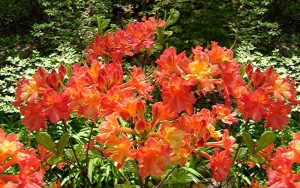
This shrub proliferates and produces beautiful pink and white flowers in late spring and early summer.
Another excellent shrub for the garden in South Carolina is the American sweet gum. This shrub grows slowly but is very tall and produces long trunks with beautiful smooth bark. The American sweet gum is also known for its large, fragrant flowers in late spring or early summer.
You should try laurel oak when searching for a fast-growing shrub that produces lots of flowers. This shrub proliferates and can reach a height of 10 feet tall. The laurel oak is also known for its unique leaves, which are shaped like broad arrows.
Coastal Leucothoe
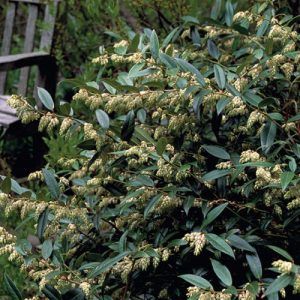
The coastal leucothoe is a deciduous shrub that grows between 2 and 4 feet tall. It has clusters of white flowers in late spring and early summer. The leaves are oval, with serrated edges and a red-brown center. The flowers attract hummingbirds, and the leaves are edible.
Coastal leucothoe is commonly used as an ornamental plant in gardens throughout the southeastern United States. It is tolerant to different conditions, making it a good choice for gardens in South Carolina. It is also easy to grow, requiring little care once established.
South Carolina Native Trees
If you’ve ever been outdoors and seen a tree, you probably have noticed that they’re not all the same. Some are deciduous, some are evergreens, and others have exciting features like fruit or flowers. So let’s start with a list of the seven native South Carolina trees you will love.
There are many benefits to using South Carolina native trees in your landscaping:
- They are drought tolerant.
- They provide shade and privacy.
- They are resistant to pests and diseases.
- They are easy to maintain.
- They add beauty and value to your property.
If you’re thinking about growing a tree in South Carolina, you’ll want to ensure you take care of it. Here are some tips on how to care for a native tree in the Palmetto State:
First and foremost, make sure you have suitable soil. Native trees require a well-drained soil that is rich in organic matter.
Once you have suitable soil, be sure to water your tree regularly. Eastern Carolina rainfall is notoriously heavy, so watering your tree regularly will help keep it healthy and hydrated.
Once a month, fertilize your tree with high-nitrogen plant food (like 10-10-10). This will help promote vigorous growth and reduce the need for frequent watering.
Bald Cypress

Bald cypress trees are one of the most popular trees in South Carolina. They are well known for their long life and beautiful appearance.
Bald cypress trees are native to the coastal plain of South Carolina. They grow best in moist, sandy soil with low calcium and magnesium content. This tree is also tolerant of salty conditions.
Bald cypress trees are not easy to grow, but they are worth it if you can find them. These trees grow slowly but are very durable. They are perfect for areas that receive a lot of rainfall or flooding.
Eastern Hemlock

Eastern Hemlock is one of the most popular trees in the southeastern United States. This tree survives well in a wide variety of soil types and can be found growing throughout much of South Carolina. Eastern Hemlock is a slow-growing tree that can live for hundreds of years.
Some benefits of eastern hemlock include its beautiful autumn colors and its ability to tolerate dry and wet conditions. Eastern hemlock is also a solid tree, able to support heavy loads without bending or breaking.
Eastern hemlock is an excellent choice if you are looking for a beautiful tree that will add character to your landscaping.
Loblolly Pine
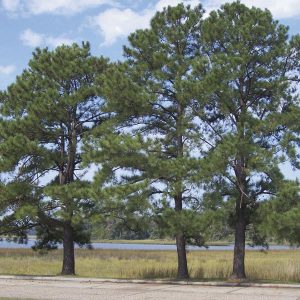
The loblolly pine is a native tree to South Carolina. This tree grows well in areas that have low humidity and moderate temperatures.
The loblolly pine is a tall tree that can reach heights of up to 30 feet. It has a broad trunk and an extensive crown. The loblolly pine is a popular choice for timber because it is solid and resistant to decay. It also has a beautiful grain used in furniture and other wood products.
The loblolly pine is famous for landscaping because it has a dense canopy that provides shade and prevents sunlight from being directly transmitted to the ground. It also produces a thick layer of bark, which helps to protect the tree against attacks by insects and diseases.
Longleaf Pine
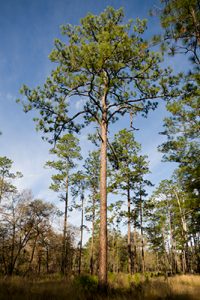
This tree is native to South Carolina and can grow up to 40 feet tall and 25 feet wide.
What makes the longleaf pine so unique? For one, it’s one of the longest-lasting trees in the south. It can last up to 200 years, which is great if you’re looking for an option that will be around for a while. Its strong trunk and branches make it an excellent choice for construction or landscaping projects.
Shortleaf Pine
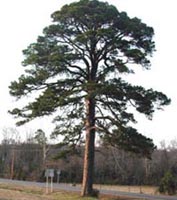
This tree is a native of the state and is known for its long life and beautiful coloration.
Shortleaf pine grows to be a medium-sized tree, averaging 30 feet tall and 12 feet wide. It has smooth, needle-like foliage and is typically light green or blue-green. The shortleaf pine is also very easy to care for and will not require much pruning or maintenance.
Southern Magnolia
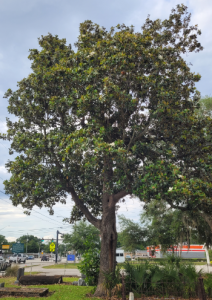
The southern magnolia is an attractive tree that grows best in the southeastern United States. This tree is famous for its large, showy flowers and strong wood. The southern magnolia is also a good choice for South Carolina natives because it can grow in various soil types.
The southern magnolia is a tall tree that can reach up to 60 feet tall. Its leaves are large and green, and its flowers are brightly colored. The southern magnolia is pollinated by bees, which help to fertilize its flowers. The flowers of the southern magnolia are beautiful to birds and other animals.
The southern magnolia is a slow-growing tree, meaning it will take some time to get established in South Carolina. However, once it has taken root, the southern magnolia will be a beautiful addition to your garden.
Willow Oak

Willow oak is a native South Carolina tree found all over the state. It is popular with landscapers and gardeners because of its beautiful leaves and branches.
Willow oak grows best in areas that have a moist climate. It can survive in dry conditions but will not thrive in them. The tree is also resistant to pests and diseases, making it a good choice for gardens or landscapes where pests or diseases are a problem.
Willow oak is a slow growing tree, which means it takes a while to reach maturity. However, once it does mature, it will provide you with years of enjoyment.
Sweet Bay
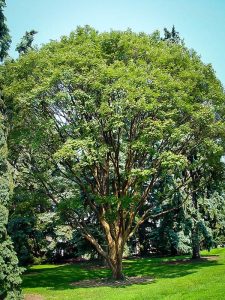
Sweet bay (Magnolia virginiana) is a graceful tree that grows well in the low country of South Carolina. This tree is native to the Eastern US and can be found growing throughout the Southeast. Sweet bay is a medium to large-sized tree that typically grows to around 40-60 feet tall and 25-35 feet wide. The bark on the lovely bay is smooth, gray, and scaly. The leaves are alternate, long, and narrow with a serrated margin. The white and pendulous flowers bloom in late spring through early summer. The fruit is a small round pod that contains several seeds.
What are the benefits of using native plants?
One of the benefits of using native plants is that they help to restore damaged ecosystems. Native plants are adapted to the specific region in which they are found, which means they are better able to tolerate environmental changes.
Native plants also have beneficial effects on the environment. For example, they help to reduce the amount of pollution that the plant emits. They also provide animal food and shelter, which helps improve the overall ecosystem.
When you use native plants, you are assisting in restoring a damaged ecosystem and improving the environment as a whole.
One of the most common effects of native plants in South Carolina is that they help to control insects and other pests. Native plants are often very dense, which makes them difficult for problems to reach the flowers and seedlings. This helps reduce the need for insecticides, herbicides, and other pesticides.
Moreover, the tough leaves and stems of many native plants protect them from being eaten by insects or other predators. This prevents them from becoming susceptible to disease, which can cause them to die off. Some native plants are so strict that they can even resist drought and frost.
Native plants are essential for pollination in South Carolina. They provide a habitat for many pollinating insects and help to attract bees and butterflies.
Native plants also help to reduce the need for pesticides. By providing nectar and pollen, these plants help to feed the insects that pollinate other plants. This assists in minimizing the need for pesticides and protecting the environment from harmful chemicals.
One of the benefits of using native plants is that they help to improve water quality. By removing pollutants from the water, native plants can make it more suitable for humans and other plants. This can reduce the need for chemicals and increase the water quality available to people and wildlife.
Native plants also help to improve air quality. By filtering pollutants out of the air, they can protect people and wildlife from the harmful effects of air pollution. Native plants can also provide a valuable resource for cleaning up polluted areas.
Native plants are typically full of nutrients and antioxidants, which can help to keep wildlife healthy. For example, native shrubs can provide shelter for animals during the summer months. They can also provide food for animals and attract beneficial insects, which can help control pests.
In addition, native plants can help to clean up areas around them. Because they are often taller than other plants, they can remove debris accumulating over time. This can help to improve the environment and protect wildlife from harmful toxins.
Conclusion
There is no doubt that native plants have many benefits for our environment and overall quality of life. They help stabilize soil, purify water, reduce air pollution, support wildlife populations, and much more.

